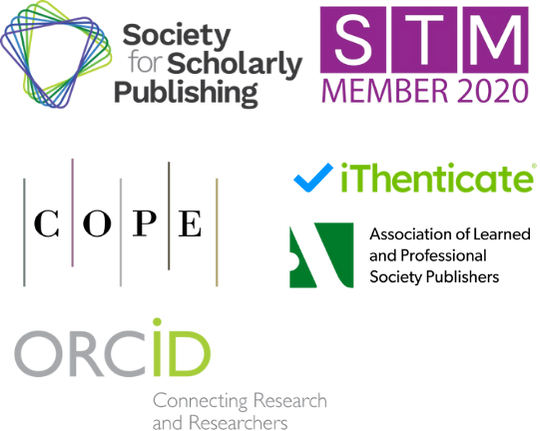Novel Copper Coordination Polymers Incorporating Dual Auxiliary Ligand Systems: Enhanced Urease Inhibition Mechanisms
DOI:
https://doi.org/10.71222/h7e9dd25Keywords:
copper coordination polymers, urease inhibition, dual auxiliary ligands, Schiff base complexes, biomedical applications, enzyme inhibitorsAbstract
The development of efficient urease inhibitors has become increasingly important due to their potential applications in agricultural and biomedical fields. This comprehensive study investigates novel copper coordination polymers incorporating dual auxiliary ligand systems and their enhanced urease inhibition mechanisms. The research explores the synthesis, structural characterization, and biological evaluation of copper-based coordination polymers with specific focus on their urease inhibitory activities. Recent advances in coordination polymer chemistry have demonstrated that copper complexes with carefully designed auxiliary ligand systems exhibit superior urease inhibition compared to conventional inhibitors. The dual auxiliary ligand approach allows for fine-tuning of the coordination environment around copper centers, leading to optimized binding interactions with the urease enzyme. Through systematic investigation of structure-activity relationships, this work elucidates the fundamental mechanisms underlying enhanced urease inhibition in these novel copper coordination polymers. The findings reveal that the incorporation of dual auxiliary ligands not only improves the stability of the coordination frameworks but also enhances their biological activity through multiple binding modes. These results provide valuable insights for the rational design of next-generation urease inhibitors with potential applications in treating urease-related diseases and agricultural nitrogen management.
References
1. X. Dong, T. Guo, Y. Li, Y. Cui, and Q. Wang, "Synthesis, structure and urease inhibition studies of Schiff base copper (II) com-plexes with planar four-coordinate copper (II) centers," J. Inorg. Biochem., vol. 127, pp. 82–89, 2013, doi: 10.1016/j.jinorgbio.2013.07.036.
2. C. Ma, Y.-X. Li, W. Duan, L. Zhang, and J. Luan, "Fabrication of second auxiliary ligand-induced copper-based coordination polymers as urease inhibitors," Chem. Eng. Sci., vol. 289, pp. 119884–119884, 2024, doi: 10.1016/j.ces.2024.119884.
3. F. Ding, C. Ma, W.-L. Duan, and J. Luan, "Second auxiliary ligand induced two coppor-based coordination polymers and urease inhibition activity," J. Solid State Chem., vol. 331, pp. 124537–124537, 2023, doi: 10.1016/j.jssc.2023.124537.
4. G. Xie, W. Guo, Z. Fang, Z. Duan, X. Lang, D. Liu, G. Mei, Y. Zhai, X. Sun, and X. Lu, "Dual-metal sites drive tandem electro-catalytic CO₂ to C₂⁺ products," Angew. Chem., vol. 136, no. 47, p. e202412568, 2024, doi: 10.1002/ange.202412568.
5. M. Asad, Muhammad, Z. Khan, and T. Kamal, "Copper (II) Complexes of Bishydrazone Derivatives: Synthesis, Characteriza-tion and Urease Inhibition Studies," ResearchGate, vol. 22, no. 5, pp. 698–703, 2014.
6. G. I. Dzhardimalieva, R. K. Baimuratova, E. I. Knerelman, G. I. Davydova, S. E. Kudaibergenov, and O. V. Kharissova et al., "Synthesis of Copper (II) Trimesinate Coordination Polymer and Its Use as a Sorbent for Organic Dyes and a Precursor for Nanostructured Material," Polymers, vol. 12, no. 5, pp. 1024–1024, 2020, doi: 10.3390/polym12051024.
7. F. Ding, N. Su, C. Ma, B. Li, W.-L. Duan, and J. Luan, "Fabrication of two novel two-dimensional copper-based coordination polymers regulated by the 'V'-shaped second auxiliary ligands as high-efficiency urease inhibitors," Inorg. Chem. Commun., vol. 170, p. 113319, 2024, doi: 10.1016/j.inoche.2024.113319.
8. R. Mehmood, A. Sadiq, R. I. Alsantali, Ehsan Ullah Mughal, M. A. Alsharif, and N. Naeem et al., "Synthesis and Evaluation of 1,3,5-Triaryl-2-Pyrazoline Derivatives as Potent Dual Inhibitors of Urease and α-Glucosidase Together with Their Cytotoxic, Molecular Modeling and Drug-Likeness Studies," ACS Omega, vol. 7, no. 4, pp. 3775–3795, 2022, doi: 10.1021/acsomega.1c06694.
9. J. Ashraf and M. A. Riaz, "Biological potential of copper complexes: a review," Turk. J. Chem., vol. 46, no. 3, pp. 595–623, 2022, doi: 10.55730/1300-0527.3356.
10. Y. Zhang, Y.-H. Li, S.-B. Jiang, S.-L. Wang, S.-S. Qian, and J. Qin et al., "Syntheses, structures, and bioactivities evaluation of three transition metal complexes with 1,2,4-triazole carboxylic derivative," J. Coord. Chem., vol. 74, no. 9–10, pp. 1522–1533, 2021, doi: 10.1080/00958972.2021.1900832.
11. F. Ding, C. Hung, J. K. Whalen, L. Wang, Z. Wei, and L. Zhang et al., "Potential of chemical stabilizers to prolong urease inhi-bition in the soil–plant system," J. Plant Nutr. Soil Sci., vol. 185, no. 3, pp. 384–390, 2022, doi: 10.1002/jpln.202100314.
12. B. Krajewska, "Urease-aided calcium carbonate mineralization for engineering applications: A review," J. Adv. Res., vol. 13, pp. 59–67, 2018, doi: 10.1016/j.jare.2017.10.009.
13. M. Ikram, S. Rehman, Faridoon, R. J. Baker, H. U. Rehman, and A. Khan et al., "Synthesis and distinct urease enzyme inhibitory activities of metal complexes of Schiff-base ligands: Kinetic and thermodynamic parameters evaluation from TG-DTA analy-sis," Thermochim. Acta, vol. 555, pp. 72–80, 2013, doi: 10.1016/j.tca.2012.12.023.
14. X. Dong, Y. Li, Z. Li, Y. Cui, and H.-L. Zhu, "Synthesis, structures and urease inhibition studies of copper (II) and nickel (II) complexes with bidentate N, O-donor Schiff base ligands," J. Inorg. Biochem., vol. 108, pp. 22–29, 2012, doi: 10.1016/j.jinorgbio.2011.12.006.
15. W.-L. Duan, K.-T. Wang, F. Yan, and J. Luan, "Fabrication of multinuclear copper cluster-based coordination polymers as urease inhibitors," Dalton Trans., vol. 53, no. 3, pp. 1336–1345, 2024, doi: 10.1039/d3dt03459c.
Downloads
Published
Issue
Section
License
Copyright (c) 2025 Elise Harper (Author)

This work is licensed under a Creative Commons Attribution 4.0 International License.


